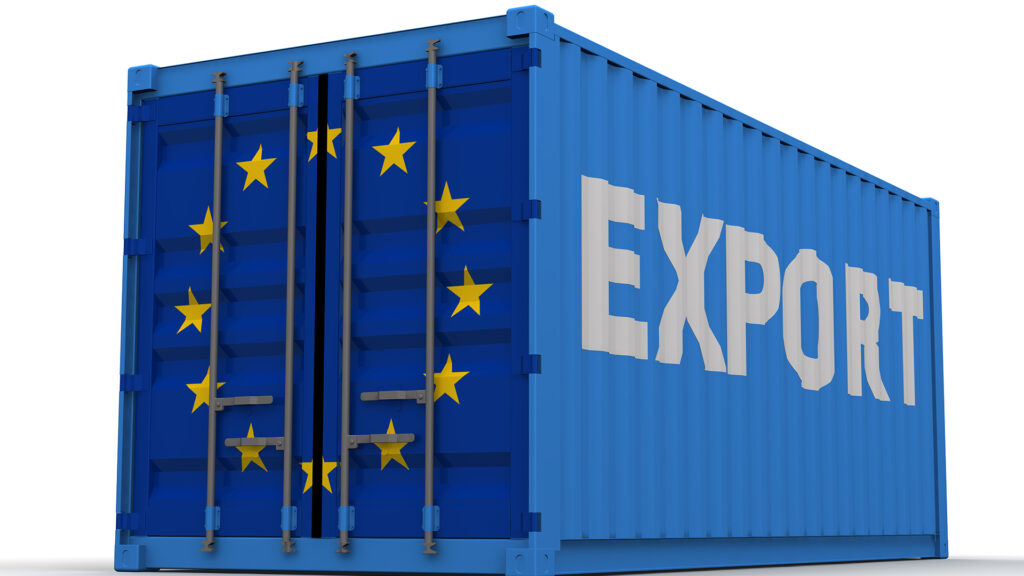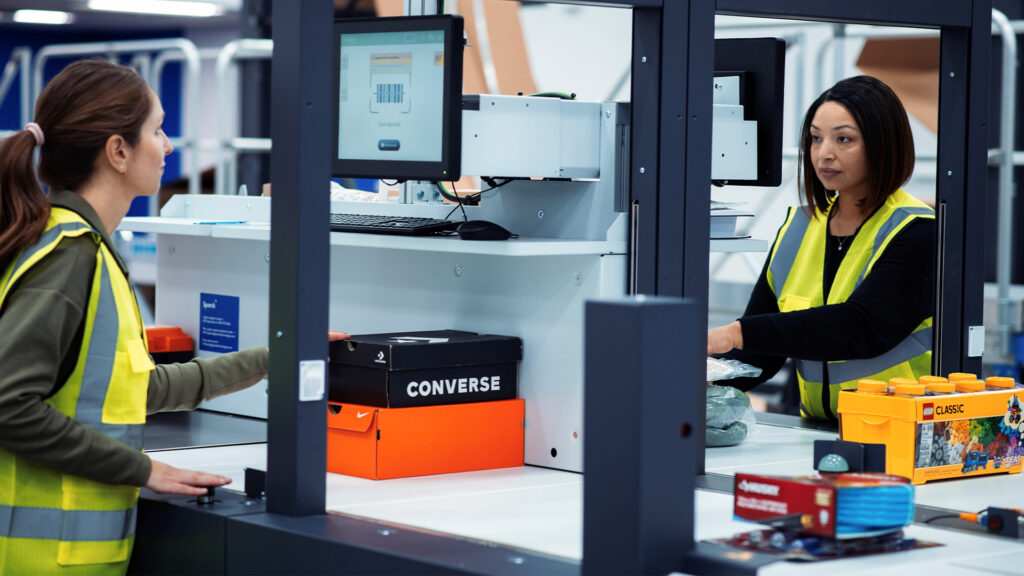
Pooling inventory to serve both fashion retail stores and ecommerce channels can create an engine for growth, with increased sales and higher margins. Darcy de Thierry, Managing Director of Ferag UK explains how.
Fashion brands face an ongoing battle to protect margin. Constantly under pressure to provide value to the customer – regardless of rising labour costs, the channel, or consumer expectations on free returns – retail businesses are having to think hard about their cost-to-serve. That is, if they wish to grow and remain profitable.
So, how can multi-channel retailers offer value, along with product and service consistency, across all their channels, while keeping costs to a minimum? Is there an intelligent way of, not only protecting margins, but growing them?
Automation offers obvious advantages in terms of streamlining fulfilment processes, providing capacity to facilitate growth and cope with peak demand. It also helps to reduce reliance on increasingly costly and difficult to find labour resources. But all too often the scale isn’t there to justify the investment. Perhaps, operations are too fragmented, carried out across a number of sites.
Scaling for automation
However, for a great many fashion retailers the answer could be relatively simple: create the necessary scale for automation by consolidating inventory into one omni-channel facility that serves both high street stores and ecommerce channels. Pooling stock in this way not only offers the scale and throughput needed for automation, but it also holds the potential to create huge flexibility, where fashion goods flow quickly and smoothly to satisfy demand, whether that be on the high street, click n’ collect, or ecommerce. With this agility, there are no longer complications around moving stock between locations or being out of stock in one channel only to find excess stock in another.
What’s more, a single automated omni-channel facility could, with the right technology, handle returns too. Processing items swiftly and making them immediately available for sale again – via whichever channel is best suited – has the potential to increase sales and may reduce the need for markdowns. Much depends upon acting quickly, before a product loses its fashion moment!
Overcoming technology barriers
A major barrier for many businesses considering an omni-channel approach is the thought of how to bring together disparate technologies and systems to cope with the diverse needs of assembling replenishment for high street stores and on the other hand, picking single or few items for a large number of ecommerce orders. What could be needed – sorters, multi-shuttle and mini-load systems, hanging garment solutions, specialist technologies for returns processing? How do you bring flat-pack / boxed items (such as shoes or accessories) together with soft clothing – will that require a separate sorter? Will all these systems integrate to create a cohesive and flexible solution capable of serving high street stores and ecommerce channels? And, how much space will all this take up?
These concerns can be put aside. There is a form of warehouse automation technology that offers all the capabilities necessary to orchestrate and fulfil orders for high street stores and ecommerce, all in a single seamless operation – offering automated movement, sorting and buffering of hanging goods and boxed items in one system. Overhead pouch sortation systems, such as Ferag’s advanced Skyfall solution, are capable of sorting and processing many thousands of orders an hour, with each pouch able to carry both hanging garments and flat items, such as shoes and flat pack goods, enabling fast order fulfilment from a single pool of inventory.
Store friendly sequencing
Critically, the same high-speed pouch sorter system used for fulfilling ecommerce orders can also be deployed to create store friendly sequenced consignments for high-street shops – pulling from the same, pooled inventory. The benefit of sequencing product for a particular store’s layout is that the shop assistant assigned to replenishing shelves and rails is able to perform the task quickly and efficiently, freeing them to spend more time with customers – potentially, to secure more sales.
An obvious advantage of a high-speed pouch solution, like Ferag’s Skyfall, is that it uses available overhead space – the third dimension of the building – keeping floor areas free for pedestrians and other processes. What’s more, pouch systems are a highly cost-effective alternative to other forms of goods-to-person automation, like multi-shuttle and mini-load solutions, that can cost up to 30% more. Then there is the core benefit that the Skyfall overhead pouch system undertakes high-speed sorting, conveying and buffering processes too, which with Ferag’s modular conveyor technology allows for tremendous flexibility and scalability. And as the pouch has the ability to carry flat items, such as shoes, and flat pack goods along with hanging items, there is no need to have a separate cross-belt sorter for flat items, with all the issues associated with bringing flat and hanging items together.
Buffering between processes
The ability to buffer between processes with different throughput rates – for example, ecommerce, retail store, returns handling – is powerful. It means that, for example, the elements for a store-friendly sequenced consignment can be gathered together at the same time as individual ecommerce orders are being processed. It means that ecommerce orders for a particular despatch slot/vehicle can be consolidated in advance, with only final additions to be made as the cut-off time approaches – which in turn means that cut-off can be postponed, offering the consumer a faster service and increases the potential for sales.
Importantly, picking efficiency is enhanced using a single pouch system that serves both the high street and ecommerce channels. High pick ‘hit’ rates can be achieved when blending ecommerce with retail, as instead of picking just one or two items per pouch when inducting for an ecommerce order, several more items can be picked at the same time, into the same pouch, to satisfy high street demand as well. The result is fewer pouches in circulation, more efficient picking and faster throughput.
Fulfilling potential of AI
But, perhaps, one of the greatest benefits of creating such a highly responsive, agile fulfilment capability is only now, just about to be fully realised. Artificial Intelligence (AI) will soon be capable of understanding and predicting sales patterns, both in a geographical sense, which will allow more precise allocation of stock and ranges to particular stores, and factors that may influence ecommerce customers, such as social media trends. Having a fulfilment system that has the capability to respond appropriately and quickly to AI predictions, across channels, will allow product to be optimally deployed to maximise sales and margins. Seeing this future and the need for highly responsive, ‘intelligent’ intralogistics systems, Ferag recently acquired the Australian warehouse automation software developer, dereOida.
A number of leading fashion brands are taking advantage of pouch sorter technology to increase capacity and boost performance of their fulfilment operations. Ferag has recently installed a flexible high-speed Skyfall system at a new distribution centre for children’s fashion company, Mayoral Group, in Malaga, Spain. The extensive overhead pouch solution is one of the largest to date, with a mix of hanging pouches and garment hangers totalling more than 58,000 Skyfall hangers, and a throughput of up to 12,000 units per hour. The system sorts and sequences thousands of carriers and hangers with a random mix of pockets and garments, processing orders in batches and actively sorting them in a dynamic buffering solution that offers the flexibility to fulfil both store replenishment and online orders. The same system efficiently handles returns.
Consolidating inventory in a single, highly automated omni-channel facility can drive greater efficiencies, improve productivity, and boost responsiveness – creating an engine for growth that has more opportunities for sales with higher margins.




























